How Trump / Harris Campaigns Move MINDS: 18 Marketing Tips

As an entrepreneur or marketer, you know that connecting with your audience is key. After all, your goal is to build the trust needed for them to make a purchase decision.
It’s the same trust politicians build with their voter bases—and they do so through persuasive political campaign messaging (or at least, they attempt to…). Political campaigns deliberately influence us at an emotional level to win over our hearts and minds.
And your business can use the same marketing techniques designed to move millions of voters to take action in order to attract, engage, and convert more customers for your business.
In this article, we’ll explore how TWO political ads from the intense (but fascinating from a business and marketing point of view) 2024 U.S. election, used emotion-based strategies like humor and brand association to leave a lasting impression.
After watching the video and reading the article, here are some of the key insights from each political ad that can work in your business campaigns and funnel too:
- Discover how subtle psychological triggers can outperform aggressive marketing tactics (one campaign saw 23% higher engagement)
- Uncover the one question that, when answered in your messaging, can double your conversion rates
- Learn the insider framework top politicians use to identify and tap into audience desires (and how to adapt it for your business)
- Master the brand alignment secret that helped one candidate transform his (or her ) biggest weakness into a compelling strength.
Are you ready to learn how to MOVE MINDS so that you can move your target to you, your brand, and down your funnel? Let’s go…
Want to delegate conversion improvements to your homepage, your clients’, or just delegate unlimited marketing tasks without the headaches of hiring in general? Growbo’s done-for-you all-in-one team subscription makes it easy: Learn more here and get started for $7 for your first week.
The Art of Political Persuasion: Analyzing 2024 Campaign Ads
Political advertising with million-dollar budgets offers valuable marketing lessons about the art of persuasion that clever business owners can implement for free. A recent analysis of campaign ads from the 2024 election cycle reveals how emotional resonance, brand association, and messaging clarity can either captivate or fail to move audiences. Let's examine Trump and Kamala’s contrasting approaches and extract the marketing lessons you can use, no matter your industry.
The Harris Campaign: Brand Association and Humor
Kamala Harris’ campaign released an ad featuring former President Barack Obama delivering a humorous critique of Trump's "obsession with crowd sizes." While the ad had its strengths, it didn’t quite hit the nail on the head.

What Works
1. Strategic Brand Association
Say what you want about Obama, but the man has charisma and enduring popularity. By aligning himself with Kamala, he is attempting to transfer his brand equity to her.
Two brands cultivating a positive perception between them has been well documented in consumer psychology — the problem is, the Harris campaign attempts this “brand association” a little too explicitly.
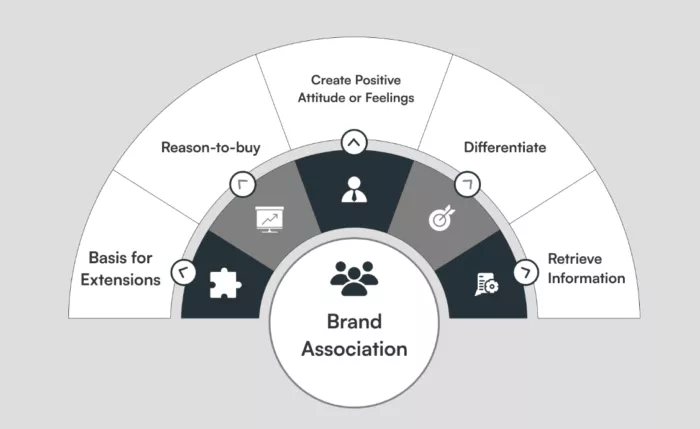
In political marketing, brand association is particularly powerful because it allows campaigns to tap into pre-existing emotional connections and trust. Humans have a tendency to transfer feelings of trust and familiarity from one known entity to another.
Politicians know this, and now your business does too..
2. Emotional Engagement
Obama uses humor to create a positive emotional response.
This approach leverages the psychological principle that people are more likely to remember and share content that makes them feel good. This fundamental marketing principle is called “emotional contagion”—the idea that emotions can spread virally through content. According to the Institute of Practitioners in Advertising, ads with emotional content performed 2 times better than those with rational content.
Incredible, right?
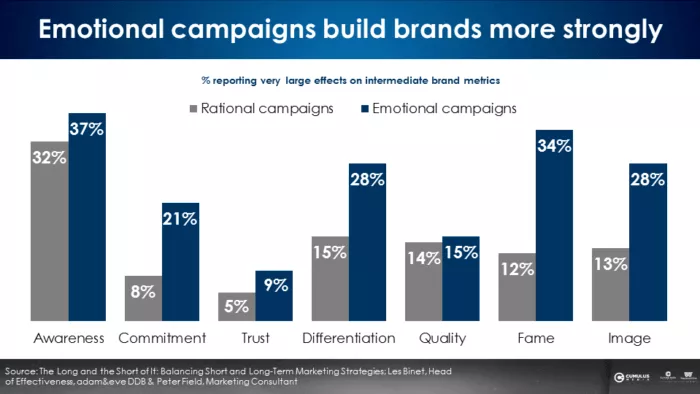
3. Professional Production
A smooth delivery and acute sense of timing taps into the marketing principle of quality signaling, where production value serves as a proxy for capability and trustworthiness. Basically, high-quality production subconsciously suggests greater competency and attention to detail, traits voters often seek in political leadership—and brands.
In a 2024 study study, Thinkbox demonstrated ad recall is 60% higher when it is professionally produced content versus nonprofessional content.
4. Core Base Appeal
Obama’s ability to effectively resonate with committed Democratic voters demonstrates the marketing principle of “tribal identity reinforcement.” By speaking directly to core supporters' values and shared beliefs, Harris’ campaign strengthened the group identity held by its members and mobilized base support. This approach leverages social identity theory, where people's sense of self is partially derived from group membership.
What Doesn't Work
1. Limited Reach
It’s far easier to appeal to already-convinced supporters rather than to voters who are on the fence. It’s preaching to the choir. But in doing so, Kamala isn’t getting any new voters, just reinforcing her base.
This illustrates the marketing principle of audience segmentation—or rather the lack thereof. While focusing on core supporters can strengthen base support, neglecting the persuadable middle market limits growth potential (which means death for your business).
Successful marketing typically requires a balanced approach that maintains core support while expanding reach. So of course you should take care of your existing customers, but don’t forget about new leads.
2. Lack of Substance
While humor and crowd-pleasing are great, they don’t offer any concrete policy proposals or tangible benefits. Remember, in business and in politics, you must always offer value.
Effective marketing must clearly communicate concrete benefits to the audience. Why should someone buy your product? How will their life improve?
In political advertising, this means translating complex policies into easy-to-swallow benefits that affect voters' lives.
According to Phillipa Tuck, brands with a robust value proposition see a 23% increase in customer trust and a WHOLE LOT of other benefits shown below:
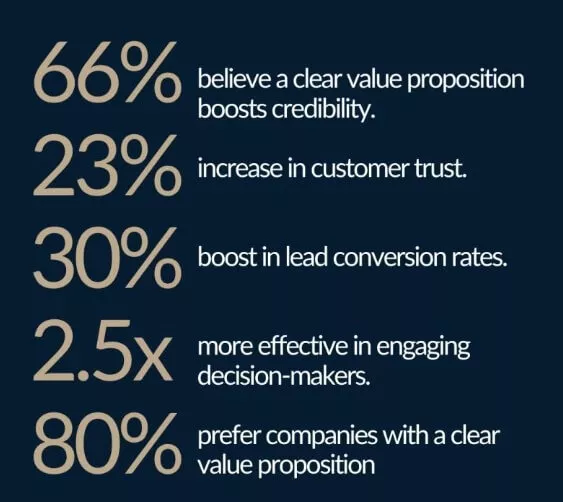
3. Missing a Call to Action
Although the ad is short and sweet, it leaves the viewer with… what? While being concise is invaluable in marketing, this ad fails to include basic elements like voting dates or clear next steps that viewers need for their consumer journey and—ultimately—for their conversion.
It all comes down to “action clarity”: Every piece of communication should guide audiences toward a specific, concrete next step.
Even when building awareness or an emotional connection, effective marketing must create a clear path to action. This principle stems from decision theory. Essentially people—including your prospective customers—are more likely to take action when given explicit, manageable steps rather than left to figure out their own course of action.
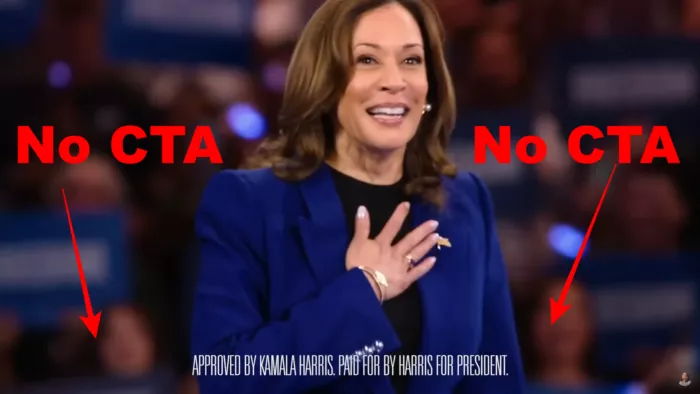
4. Weak Contrast
The ad tries to highlight Trump’s penchant for complaining and waning crowd sizes, but what does it do to directly compare the two candidates? Sure there are a few shots of different arenas, but very little context.
What’s worse, the shots of Trump rallies are incredibly zoomed in, while Kamala’s footage is large and sweeping. It isn’t a fair comparison, and most viewers will notice the discrepancy, whether consciously or subconsciously. In marketing terms, Harris lacks competitive positioning—not because she isn’t different from Trump, but because she’s not using a consistent ruler to do the measuring. A much better approach would be showing each candidate’s rally at a similar location and from a similar vantage point. Cherry-picking zoomed-in clips feels cheap and can actually weaken the campaign’s credibility.
5. Overplayed Humor
As we mentioned, humor is great, but videos like these can become dangerously overplayed, so the Harris campaign needs to be careful when and where they use videos like these.
What I mean is, the joke is funniest the first time you hear it. If this video gets broadcast too often (like as an unskippable ad, for example), it could quickly lose its charm.
This is a classic example of diminishing returns in emotional engagement where even positive elements can lose effectiveness or become counterproductive when overused.
This is called the “hedonic treadmill”—the human tendency to become desensitized to sustained emotional stimuli.
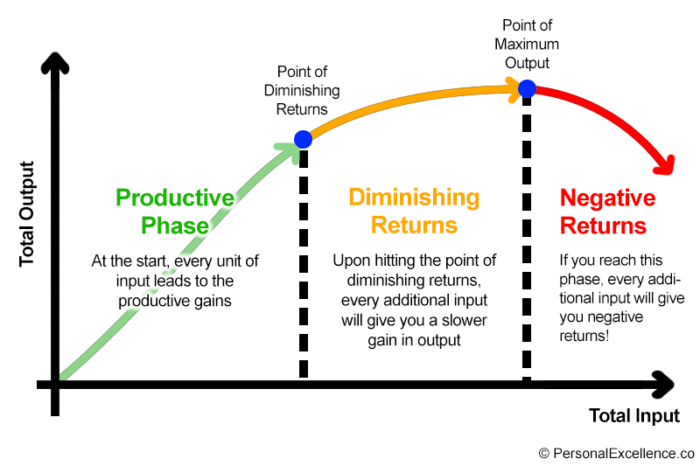
Effective marketing must carefully calibrate the duration and intensity of emotional appeals to maintain optimal impact.
The Trump Campaign: (Unexpected) Emotional Subtlety and Benefit-Focused Messaging
Although usually known for his constant energy and strong personality, Trump's "Zen Series" ads demonstrate sophisticated psychological marketing techniques through a series of quiet, emotionally striking visuals.
What Works
1. Subconscious Persuasion
The Zen ads employed System 1 Thinking rather than System 2. What does that mean?
Our brain has two ways of making decisions—fast and emotional (System 1) versus slow and logical (System 2). The Trump campaign's quiet, emotionally evocative ads target System 1. With little audio and hardly any written words at all, these ads dive into our unconscious processes and produce an intuitive, visceral response.
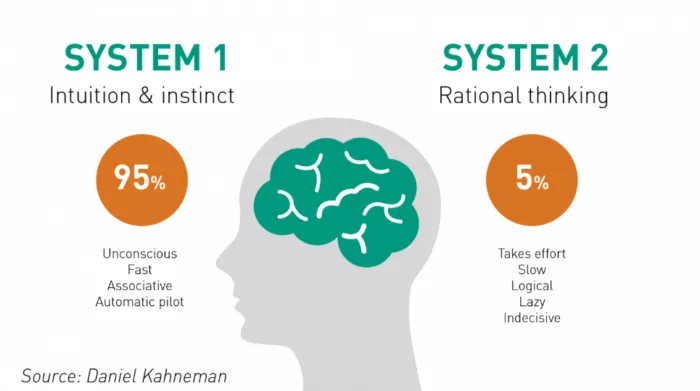
A 2022 Nielsen study found that advertisements triggering emotional responses generated 23% more sales than purely logical appeals.
2. Clear Benefits
These ads explicitly state the advantages of a Trump presidency ("Trump won't tax tips," "summers made affordable again").
This is called “benefit articulation.” Videos like these directly address the question, "What's in it for me?"
Voters are asking this question constantly. And you can bet your potential customers are too.
By focusing on outcomes rather than features, this approach pulls at viewers' heartstrings and shows them how good life would be.
3. Strategic Contrast
Trump has been criticized for being brash and loud, so his campaign took the amazingly strategic step to counter that criticism with calm, ordered scenes.
This exemplifies the marketing principle of perceptual contrast, where strategically positioning certain elements can reshape audience perception.

For instance, the two orange circles appear different in size to our eyes, but this is an illusion. Despite what our perception suggests, both circles are identical in size.
Our interpretation is influenced by the surrounding context, which creates this false sense of contrast between them. This method is used all the time - in everything from car dealerships to retail, all to drive the sale.
By deliberately contrasting expectations with reality, campaigns can effectively challenge and reshape existing narratives.
4. Environmental Storytelling
The trump ads excel at using familiar settings and situations to resonate with viewers.

Plus, in the case of the grocery store ad specifically, it is tapping into a correlation that many voters may already have: inflation, Kamala, finance.
By placing messages within recognizable contexts and feeding into known associations, Trump and his campaign feel more authentic and relevant.
More importantly, familiarity can drive sales. CMI reported that familiar scenarios increase engagement by 55%.
Familiarity leads to trust, and trust leads to revenue.
5. Issue Alignment
Like the best ads out there, these campaign videos are timely, building on current perceptions of the economy and border security.
Basically, the ad is using existing associations rather than trying to create new ones. Work smarter, not harder, right?
This approach is particularly effective because it’s less about persuading the viewer as it is about highlighting the common viewpoints you share.
6. Emotional Triggers
However, although the ads utilize existing perceptions of the present, they also effectively tap into existing anxieties about the future, particularly inflation and border security.
This is a strategy used by marketers called loss aversion: The fear of losing something often proves more motivating than the prospect of gaining something new.
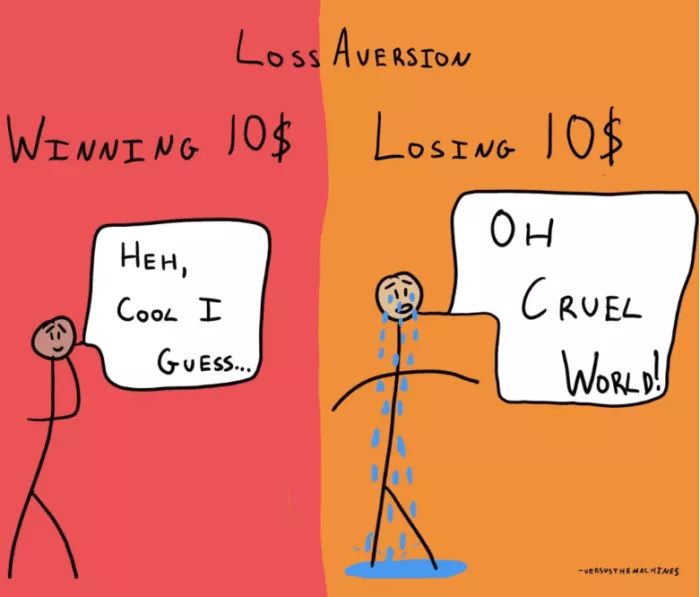
This psychological principle, first identified by Kahneman and Tversky, shows how carefully managed anxiety can be a powerful motivator for action.
What Doesn't Work:
1. Could Strengthen Emotional Impact
Some scenes could definitely emphasize pain points more.
Knowing exactly how a viewer feels and what they are trying to improve about their circumstances or their lives is key to the emotional optimization of any political campaign or business ad. But finding the right balance of emotional intensity is crucial. Too little emotion fails to create memorability, while too much can trigger defensive responses. The sweet spot lies in creating just enough emotional resonance to drive engagement without overwhelming the audience.
2. Segmentation
Multiple short ads might be more effective as a single cohesive piece. The impact of communication often depends on maintaining a consistent, unified narrative. While these Zen ads are all consistent in tone, the Trump campaign has launched a lot of other videos with much harsher energy, including attack ads.
This kind of segmentation and diversification can help target different audiences, but excessive fragmentation can muddy the overall message impact and confuse brand positioning.
3. Urgency
Like Kamala’s ads, Trump’s Zen videos could benefit from stronger, more urgent call-to-action elements.
In business and politics, creating a sense of urgency can overcome decision paralysis and prompt an immediate response. The ads could highlight that time is limited and that once election day rolls around, what’s done is done.
CONCLUSION
Insights about creating segmentation and urgency in political ads can also apply to your own marketing campaigns. If you want great marketing handled for your business (or your clients) or are eager to apply any of the tactics discussed here, then you HAVE to learn more how you can delegate
Trump and Kamala’s campaign ads from the 2024 election cycle reveal just how effective emotional messaging can be. When done correctly, emotional resonance, brand association, and messaging clarity can draw in voters. In business, they can draw in customers.
Political ads, whether through humor or subtle emotional triggers, demonstrate the power of well-crafted messaging in capturing your audience’s attention and leading them toward your end goal.
Let’s review the key takeaways we as marketing professionals can glean from these ads:
- Emotional Resonance: Effective persuasion doesn't require loud or obvious emotional appeals. Subtle, well-crafted messaging can create powerful emotional connections.
- Clear Value Proposition: Always answer the fundamental question, "What's in it for me?" The Trump ads consistently communicate specific benefits, while the Harris ad focuses more on personality and association.
- Target Audience Understanding: Know your audience's pain points and aspirations. The Trump ads target specific economic and security concerns, while the Harris ad may miss bigger talking points.
- Brand Consistency: Ensure your messaging aligns with and potentially strengthens your brand position. The Trump ads effectively counter negative perceptions, while the Harris ad may not sufficiently establish a fair comparison.
To apply these strategies in your own marketing efforts, consider exploring Growbo. Our done-for-you service helps you with your copywriting, design and other marketing needs, enabling you to focus on what truly matters in your business. Schedule a call today to experience how Growbo can transform your marketing strategy.
We invite you to share your thoughts and experiences in the comments below. How do you plan to incorporate emotional resonance and strategic messaging into your marketing campaigns? What challenges do you face in aligning your brand messaging?
Keep Growin,’ Stay Focused,

Image credits:
- https://www.goldenflitch.com/blog/brand-association
- https://www.westwoodone.com/blog/2018/06/25/rational-versus-emotional-creative-short-term-and-long-term-impact/
- https://www.linkedin.com/posts/philippatuck_thoughtleadership-valueproposition-b2bmarketing-activity-7232447006495944704-BLGX/
- https://www.linkedin.com/pulse/knowing-yourself-thyself-true-law-diminishing-returns-tayo-adeyinka/
- https://www.rogerleishman.com/2017/12/thing1.html
- https://othmarstrombone.wordpress.com/tag/perceptual-contrast/
- https://thedecisionlab.com/biases/loss-aversion














